INTERFERENTIAL THERAPY [IFT or IFC ]:
INTRODUCTION:
- It is a type of electo therapy treatment that uses electric currents to stimulate tissue which provides pain relief, reduction of swelling and many other health benefits.
- The principle of interferential therapy is to cause two medium frequency currents of slightly different frequencies to interfere with one another.
- It is basically used for the treatment of Chronic, Post Traumatic, and Post-surgical pains.
- IFT uses a range of frequencies that stimulate the body to get positive reactions such as increasing the blood supply in an area which in turn increases the healing speed.
- The major advantage of IFT is that it produces effects in the tissue, exactly where required without unnecessary and uncomfortable skin stimulation.
- This technique is widely used to elicit muscle contraction, promote healing and reduce edema.
- IFT is the form of the electrical treatment in which two medium frequency currents are used to produce a low – frequency effect .
History Interferential therapy :
- It is developed by Dr. Hans Nemes of Vienna
- Austria
- In 1950’s
Skin impedance Interferential therapy :
- Main problem of direct application of faradic or sinusoidal currents to patient is the very high skin impedance.
- Medium frequency current of around 4000Hz , while able to stimulate motor and sensory nerves, encounter a much Lower skin impedance .
- Impedance is inversely proportional to frequency.
Formula of skin impedance :
- Z= 1/2 pfC
- where , Z = impedance in ohms
- f =frequency in hertz
- C= capacitance of skin in micro farads
- the resistance of the skin 50 Hz is in the region of 3200 O where as with the frequency of 4000 Hz skin resistance is 40 O.
Principle of Interferential therapy :
- It is to pass two medium frequency alternating currents which are the slightly out of phase, through the tissue., where the currents intersect to produce a low frequency effect.
Principle of wave inter fence of Interferential therapy :
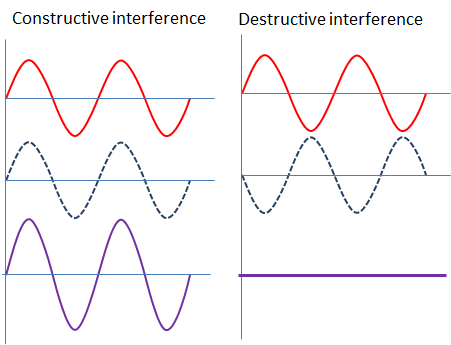
Constructive inter fence :
- When the two sinusoidal waves that are exactly in phase or one, two or three wavelength out of phase, the waves supplement each other in constructive inter fence.
Destructive inter fence :
- When the two sinusoidal waves are different by 1/2 q wavelength the result is cancellation of both waves.
Continuous inter fence :
- Two waves slightly out of phase collide and a form a single wave with progressively increasing and dressing amplitude.
Beat frequency of Interferential therapy :
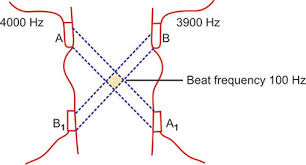
- When to apply Interferential therapy two frequency current is used.
- If one of the currents is kept in constant of 4000 Hz and other can be varied between 3900 and 4000 Hz
- And interference effect at the called beat frequency.
- Beat frequency is equal to difference in frequency between the two currents.
- It is produce in the tissue at the point where the two current cross.
| NO. | CIRCUIT -A | CIRCUIT – B | BEAT FREQUENCY |
| 1 | 4000 Hz | 3900 Hz | 100 Hz |
| 2 | 4000 Hz | 3980 Hz | 20 Hz |
| 3 | 4000 Hz | 3500 Hz | 500 Hz |
| 4 | 4000 Hz | 3870 Hz | 120 Hz |
- By varying frequency of second circuit produced deep in the patient’s tissue.
Sweep principle of Interferential therapy :
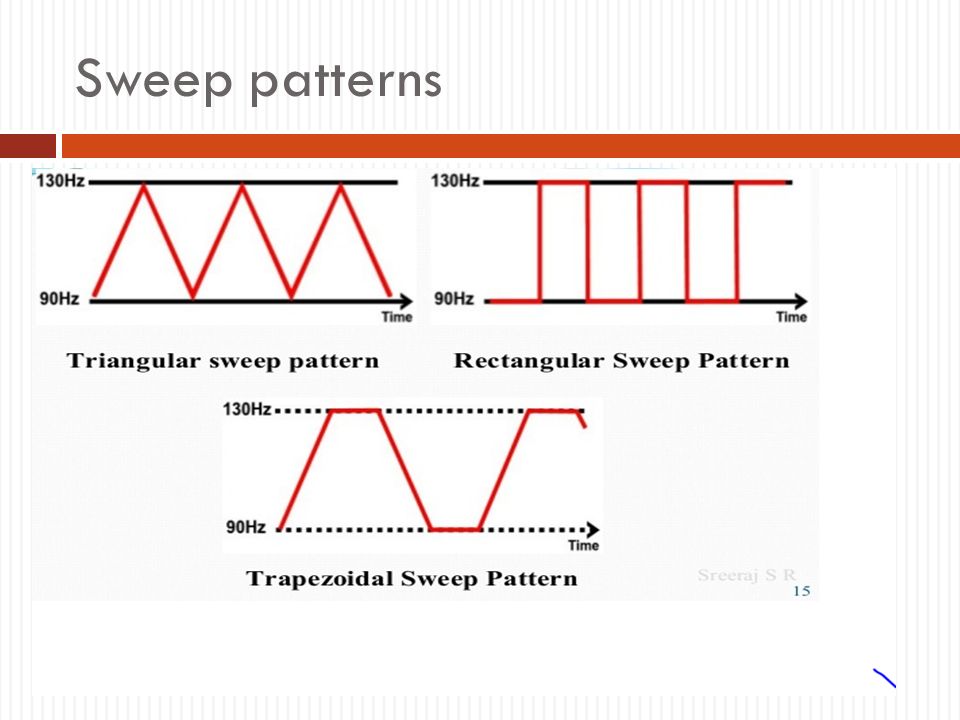
- It is using the machine set to automatically the effective stimulation.
- Frequency of stimulation using either per -set or user set sweep ranges .
- It is may be constant or rhythmic .
Usually used frequency =
- 1 -100 Hz constant
- 1-10 Hz rhythmic
- 80-100 Hz rhythmic
- 1-25 Hz rhythmic
- Any particular fixed frequency can be chosen .
- Such sweep prevent accommodation of nerves .
Three pattern of sweep of Interferential therapy :
- Triangular
- Rectangular
- Trapezoidal
Vector effect of Interferential therapy :

- The interference field is rotated to an angle of 450 in each direction, the field thus covers a wider area.
- This is useful in diffuse pathology or if the site of the lesion cannot be accurately localized.
Frequency swings of Interferential therapy :
- Some equipment allows a variation in the speed of the frequency swing.
- In which a rhythmical progression is made through the full range of beat frequency.
- If a rhythmical range of 0-100 Hz is required this is achieved by varying the frequency in the second circuit between 3900 and 4000 Hz over a period 5-10 minutes.
Constant frequency of Interferential therapy :
- Some treatments may be carried out with the interference fixed at a certain frequency.
- Rhythmic frequency is useful if several types of tissues are to be treated at once.
- A variation in the frequency also overcomes the problem of tissue accommodation where the response of a particular tissue decreases with time.
Parameter of Interferential therapy :
Frequency :
100-150Hz constant or 90-100Hz rhythmic:
- These frequencies are useful for pain relief,
- IFT acts on large myelinated fibers in the dorsal horn, blocking off small pain fibers.
- The higher frequencies have a triggering effect on the endogenous opiates in the mid-brain which inhibit pain.
0-10Hz rhythmic or 10- 50Hz rhythmic:
- These frequencies are useful for muscle stimulation.
- They produce stimulation of deep, normally innervated muscle tissue with little sensory stimulation.
- As the frequency increases the contraction changes from a twitch to a titanic contraction.
0-100Hz rhythmic:
- The range of frequencies produces vasodilatation.
- This is stimulation and relaxation of vessel walls, giving a sinusoidal effect.
Current :
- It is controlled by therapist .
- Equal to the sum of the two separate currents .
- The current is increased until the patient feels tingling.
- As accommodation occurs the intensity is increased to the point of muscle stimulation.
Duration of treatment :
- Between 10 – 20 minutes.
- Mostly used 10 minutes
How to work with Interferential therapy?
- Interferential current therapy works by sending small amounts of electrical stimulation to damaged tissues in the body.
- The therapy is meant to boost the body’s natural process of responding to pain, by increasing circulation thus produces hormones that promote healing.
- IFT delivers intermittent pulses to stimulate surface nerves and block the pain signal, by delivering continuous deep stimulation into the affected tissue.
- A frequency of 100Hz may stimulate the large diameter A-beta fibers, which have an effect on the pain gate, and inhibit the transmission of small-diameter nociceptive traffic ( C and A-delta fiber), which effectively closes the gait to painful impulses.
- Interferential current Increases the circulation of blood thus reduces swelling, by washing away the chemicals that stimulate the nociceptive nerve endings.
Types of electrodes of Interferential therapy :
- Plate
- Pen
- Vacuum
Plate electrodes :
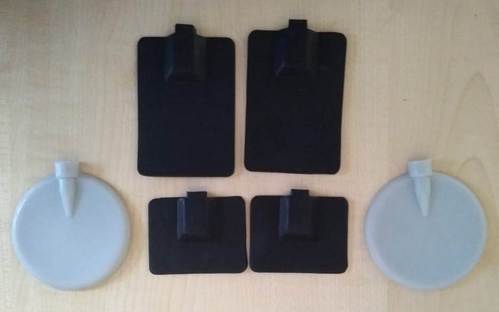
- Made form conducting rubber
- Comfortable and long lasting
- Larger plates electrodes = deeper effect
- Smaller plates electrodes = superficial effect, localized effect
- Attached with strap for good contact
Vacuum electrodes :
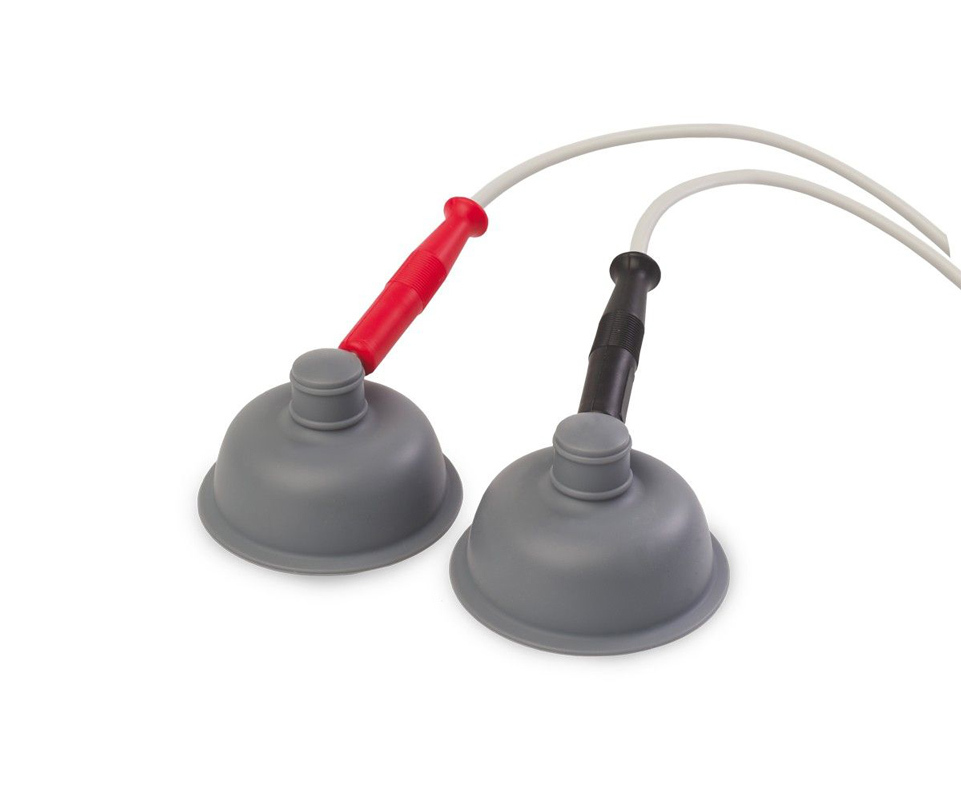
- Made forma vacuum unit plug into a rubber suction cup connected to a machine
- Suction should not be apply constant because it can be uncomfortable and causes burning
- For better adherence = placed wet spongers in the cup and moisten the edges
- For excellent treatment = flat smooth area [ back or plump knee ]
- Hairy area = not apply because cant’s get airtight seal
Electrodes placement for Interferential therapy :
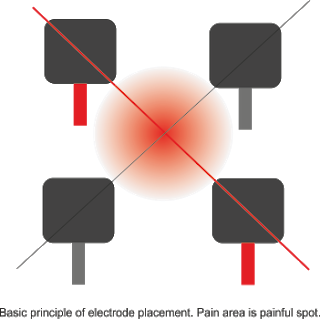
- For Interferential therapy use to for electrodes [ 2 pair electrodes ]
- Each pair indicated by the coloring wire form the machine.
- 2 electrodes = black and 2 electrodes = red .
- So in pair = 1 electrode black and 1 electrode red.
- The electrodes of each pair are placed diagonally opposite one another.
- So that beat frequency is produced in the tissue where it required.
Testing of the Interferential therapy machine :
- First of all on the plinth placed 4 electrode in positing of electrode.
- After that put the hand on center of the electrodes.
- Then increase to intensity and feel to current.
Technique of treatment of Interferential therapy :
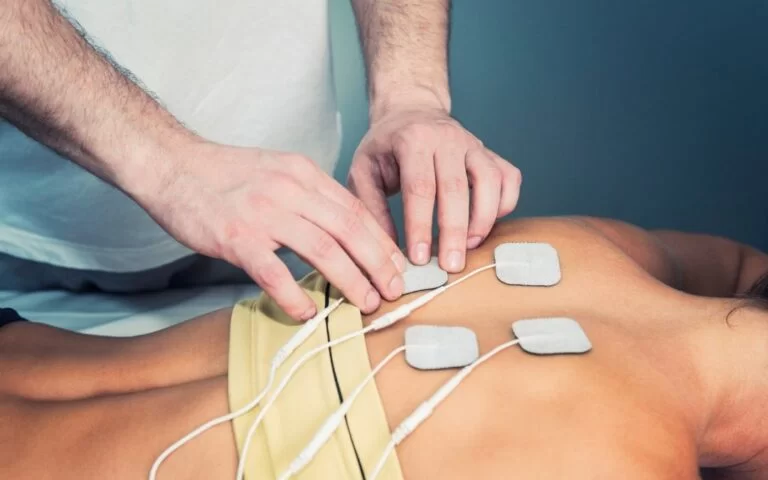

- Patient position = comfortable.
- Skin = washed and apply petroleum jelly on the lesions .
- After that place the electrode on the site of treatment.
- Instruct to patient if feel a tingling sensation please tell to therapist.
- On that time decrease the intensity.
Method of appliance of Interferential therapy :
- Static interference
- Dynamic interference
- Bipolar interference
Static interference :
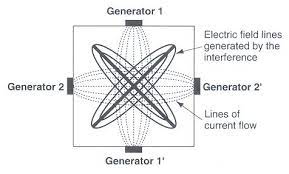
- In area IFT placed = remain stationary
- static interference gives appearance = cloves leaf
- lies to 45 angles to the perpendicular lines of each electrodes
Dynamic interference :

- This is moving the area of interference current in = to and fro manner through 45
- Varying current , intensity form 50 to 100 %
- It is also called = vector sweep , vector scan, rotating vector
Bipolar interference :
- IFT applied = through to surface electrodes
- Current applied through to electrodes
- For small area
Dosage of Interferential therapy :
- For pain relief = 80 – 100 Hz
- For reduce swelling = 1 – 10 Hz
- Reduce edema = 100 Hz
- For partial tetany contraction = 5 – 20 Hz
- For tetany contraction = 30 – 100 Hz
- Apply for 15 minutes
Physiological effect of Interferential therapy :
- Pain relief
- Motor stimulation
- Absorption of exudate
- Increase the local blood flow
- Reduction of edema
Indication of Interferential therapy :
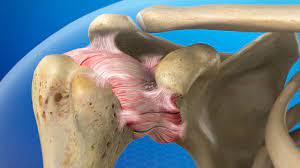
- Causalgia
- Herpes zoster
- Neuralgia
- Cervical spondylosis.
- Osteoarthritis of the knee.
- Ankylosing spondylitis
- Rheumatoid arthritis.
- Frozen shoulder.
- Disc herniation.
- Spinal canal stenosis.
- Reduction of Edema
- Muscle injuries
- Ligaments injuries
- Stress incontinence
Contraindication of Interferential therapy :
- Infective condition
- Malignancy
- Pacemakers
- Loss of sensation.
- Large open wounds
- Dermatological Conditions
- Pregnant Uterus
- Hypertension
- Thrombosis
- Hemorrhage
- Neoplasm
- Tb
- Fever
The danger of Interferential therapy :
- Electrical burns
FAQs
What is the use of IFT in physiotherapy?
IFT continuously stimulates the damaged tissue at a deep level while sometimes stimulating surface nerves to inhibit pain signals. IFT stimulates the muscles, improves circulation, reduces edoema, and relieves pain.
Is IFT therapy effective?
Interferential Joint stiffness, edoema, inflammation, and circulatory and muscle problems can all be effectively treated with current stimulation.
What is the normal frequency of IFT?
Popular electrotherapeutic pain treatment techniques include interferential therapy (IFT). In order to create a new medium-frequency current with an amplitude modulated at low frequency (i.e., 1 kHz), two medium-frequency currents (i.e., 1–10 kHz) must interfere with one another.
Does IFT have any side effects?
Such adverse effects are not present in the current therapy as they are in the majority of cases. Skin Burns are rarely seen as side effects of Interferential Therapy (IFT).
What is the cost of IFT in physiotherapy?
IFT machine costs typically range from INR 10000 to INR 2 lakh in India. Online pricing level below 10,000 INR However, due to service issues online is not the preferred choice to buy IFT online.
Is IFT good for knee pain?
In individuals with knee OA, short-term treatment with both APS and IFT may dramatically lessen pain and enhance physical function. These findings suggest that both physical techniques can be utilized to alleviate pain in knee OA as supplementary or as an alternative to medication.
Is IFT good for shoulder pain?
IFT, also known as interferential therapy, is able to continuously stimulate the afflicted tissue at a deep level. The stimulation lessens edoema and inflammation in the shoulder while also obstructing discomfort. Cryotherapy or hot fomentation both help to relieve pain, stiffness, edoema, and other symptoms.
Is IFT good for sciatica?
Interferential Therapy (IFT) is used to relieve sciatic pain, the two electrodes are placed at the nerve roots and the other two electrodes are placed at the leg, IFT is found to be highly effective for sciatica.
Is IFT better than TENS?
The researchers conclude that IFT and TENS help to relieve pain and improve physical function in patients with pain-related conditions. However, IFT is more effective in improving pain as compared to IFT.

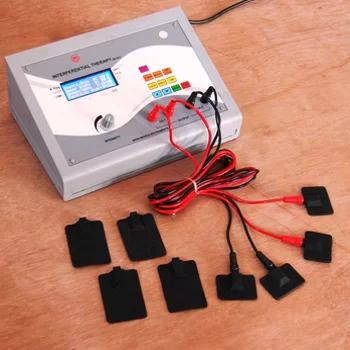
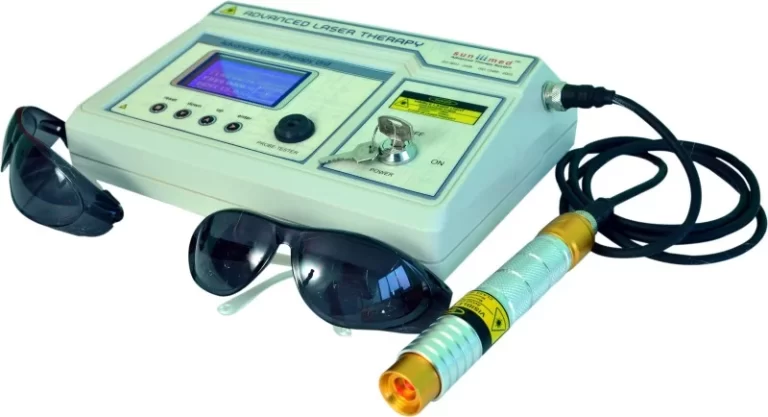
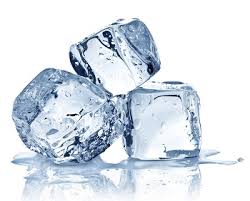
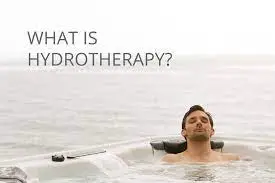

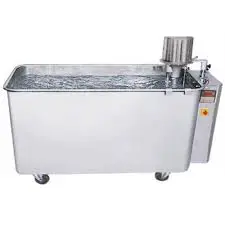
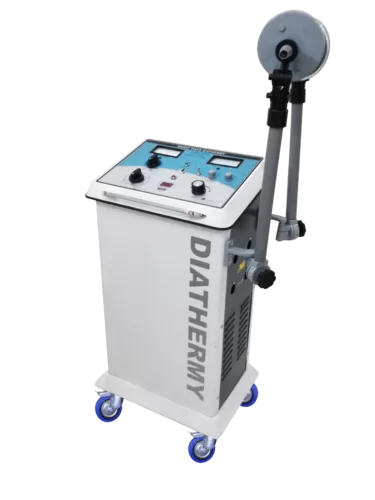
I have also taken Interferential therapy treatment in Physiotherapy center, i think this is the Best pain relieving machine.